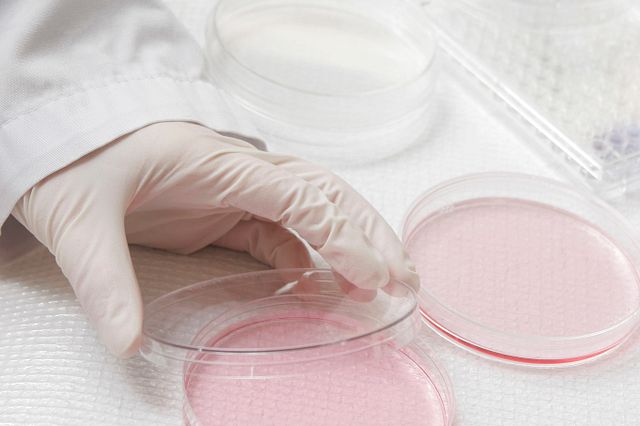ISO 10993-18 Chemical Characterization of AM Medical Materials
The ISO 10993 series of standards provides a comprehensive framework for the biocompatibility testing and evaluation of medical devices. Among these, ISO 10993-18 specifically addresses the chemical characterization of additive manufacturing (AM) materials used in medical applications. This standard is crucial for ensuring that the materials used in AM processes meet stringent safety requirements before being incorporated into medical devices.
The process outlined in ISO 10993-18 involves several key steps, including the collection and preparation of samples, analysis using various analytical techniques, and evaluation against predefined criteria. The primary goal is to identify all chemical constituents present in the AM materials and assess their potential for release into the body during use.
During sample preparation, careful handling is essential to avoid contamination or alteration of the material properties. Once prepared, samples are subjected to a range of analytical techniques such as gas chromatography-mass spectrometry (GC-MS), high-performance liquid chromatography (HPLC), and inductively coupled plasma mass spectrometry (ICP-MS). These methods allow for precise identification and quantification of both known and unknown components.
The data obtained from these analyses are then evaluated against acceptance criteria specified in the standard. Acceptance criteria may vary depending on the specific material being tested, but generally include limits on certain elements or compounds that could pose a risk if released into bodily tissues. Compliance with these criteria is critical to ensure patient safety and regulatory compliance.
It’s important to note that ISO 10993-18 does not merely focus on the chemical composition of AM materials; it also considers how those chemicals interact with biological systems. This holistic approach ensures that all aspects contributing to biocompatibility are thoroughly examined. By adhering to this standard, manufacturers can demonstrate adherence to global regulatory requirements and enhance public trust in their products.
Understanding the implications of chemical interactions at a molecular level is essential for developing safe and effective medical devices. With advancements in AM technology, there has been an increasing need for robust testing methodologies that account for unique material characteristics introduced by different printing processes. ISO 10993-18 provides just such a methodology.
For instance, some additive manufacturing techniques like laser powder bed fusion (LPBF) or electron beam melting (EBM) can introduce trace amounts of elements from the build environment into the final product. These impurities might not be present in traditionally manufactured materials but could potentially affect biocompatibility. Through thorough chemical characterization as per ISO 10993-18, these risks can be identified early on and mitigated appropriately.
| Application | Description |
|---|---|
| Laser Powder Bed Fusion (LPBF) | Critical for identifying potential contaminants introduced during the LPBF process. |
| Electron Beam Melting (EBM) | Assures that no harmful substances are released from EBM-produced parts into human tissue. |
| Stereolithography | Evaluating the safety profile of materials used in dental implants fabricated via SLA technology. |
Eurolab Advantages
At Eurolab, our expertise in additive manufacturing and medical device testing sets us apart as a trusted partner for organizations looking to comply with ISO 10993-18. Our state-of-the-art laboratories are equipped with the latest analytical instruments capable of delivering accurate results on even the most complex samples.
We offer a full suite of services tailored specifically towards meeting your needs, whether you require comprehensive chemical characterization or specialized testing for particular AM processes. With years of experience in both academic research and industry applications, our team can provide valuable insights throughout every stage of development.
- Advanced analytical capabilities
- Comprehensive range of services
- Expertise across various AM techniques
- A commitment to delivering accurate and reliable data
Environmental and Sustainability Contributions
Incorporating sustainable practices into additive manufacturing is not only beneficial for the environment but also aligns with growing consumer expectations regarding corporate responsibility. By conducting thorough chemical characterization according to ISO 10993-18, manufacturers can minimize waste generation and optimize resource use.
The process of characterizing AM materials ensures that any hazardous substances are identified early in the design cycle, allowing for changes or substitutions before production begins. This proactive approach helps prevent end-of-life disposal issues by avoiding harmful emissions from incineration or landfill.
- Reduces waste generation
- Optimizes resource use
- Promotes safer disposal practices
- Enhances overall sustainability performance





